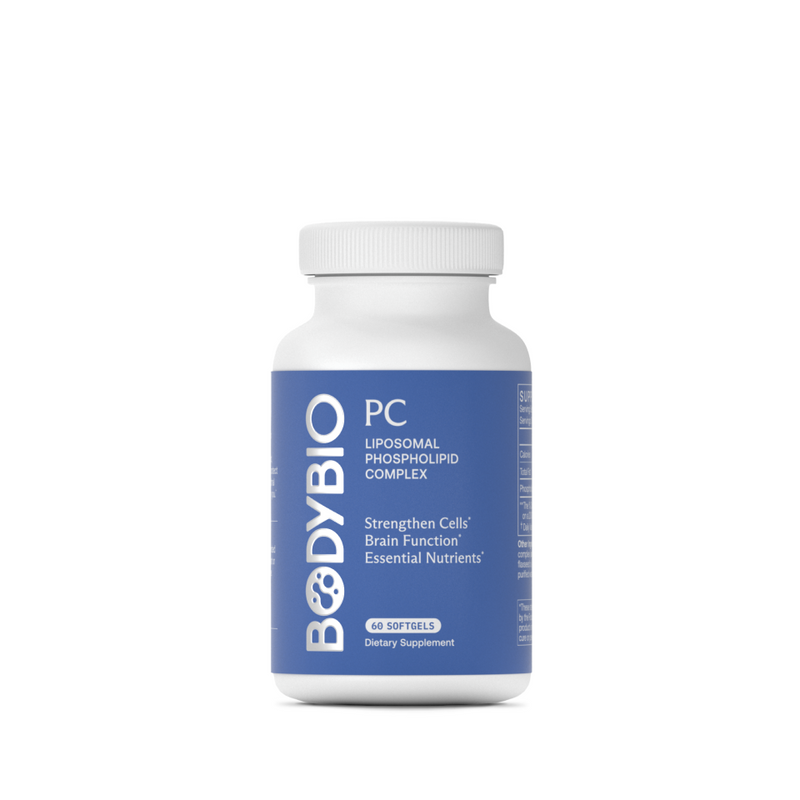Reversing Cognitive Decline: Why the Vascular System Holds the Key
Authors:

Dr. Kristine Burke
MD, Co-Founder of TruNeuraThe prevailing belief for decades has been that cognitive decline is an unavoidable descent, a one-way street toward dysfunction and dependence. But today, thanks to groundbreaking research and clinical innovation, we know that cognitive decline is not only preventable it is increasingly reversible.
As a physician who’s spent decades specializing in vascular medicine and functional systems biology, I have the privilege of being one of six clinical trial sites involved in the first placebo-controlled study on reversing cognitive decline using Precision Medicine. This work, pioneered by Dr. Dale Bredesen, who I’ve had the honor of learning from and mentoring under, is charting new territory in Alzheimer’s care.
But the more patients I treat, the clearer it becomes: the vascular system is not just relevant to brain health—it is foundational. The most profound improvements I’ve witnessed have come not just from treating the brain, but from restoring the barriers that protect it.
The Unified Barrier Hypothesis: A New Paradigm
In functional medicine, we've long focused on gut integrity: how “leaky gut” contributes to systemic inflammation, autoimmunity, and neurodegeneration. This is a critical insight.
But my vascular background led me to notice something deeper and more interconnected. Not only does the body have multiple critical barriers, all of which play a role in cognitive health:
-
The endothelial glycocalyx (EGX), the slippery sugar-protein mesh that lines the inside of blood vessels
-
The intestinal glycocalyx and epithelial barrier, essential for immune regulation and nutrient absorption
-
The blood-brain barrier (BBB), the gatekeeper that protects the brain from toxins and immune triggers
They are interdependent. Each of these barriers shares fundamental structural similarities and regulatory mechanisms—some are directly vascular while others are intimately connected to vascular function. When one breaks down, the others often follow through shared inflammatory pathways and systemic effects. And when they all begin to fail, the brain suffers.
This is the basis for what I call the Unified Barrier Hypothesis. If we restore vascular and glycocalyx barrier integrity across these systems, we can not only prevent but often reverse cognitive decline.
If you're already a BodyBio user, you're familiar with the foundational importance of cellular membrane integrity to overall health. But what many people don't realize is that this principle applies not only to the membranes within individual cells—but also to the larger-scale barrier systems that protect our brain, gut, and vascular networks.
Phosphatidylcholine (PC), the key ingredient in BodyBio PC, is a critical structural component of all cell membranes, making up approximately 50% of membrane composition in many tissues. More specifically, it contributes to the structural integrity of endothelial cells that line blood vessels and plays a supportive role in maintaining healthy barrier function throughout the body.
When barrier integrity begins to degrade—due to inflammation, toxins, poor diet, or metabolic dysfunction, we often see cascading effects across the intestinal lining, vascular endothelium, and blood-brain barrier.
In my clinical practice, I've observed that consistent use of phosphatidylcholine and a broad spectrum phospholipid complex as part of a comprehensive approach including lifestyle optimization, anti-inflammatory nutrition, and targeted vascular support can be valuable for supporting membrane health and barrier function.
The Endothelial Glycocalyx: A Hidden Master Regulator
The glycocalyx is a thin, gel-like layer that coats the inside of every blood vessel in your body. Though rarely discussed in conventional medicine, this structure plays a profound role in health. It regulates inflammation, prevents unwanted clotting, and controls what moves in and out of the bloodstream.
As shown in the recent review titled “Endothelial Glycocalyx as an Important Factor in Composition of the Blood-Brain Barrier”, the glycocalyx is not a passive lining. It is a dynamic gatekeeper that:
-
Maintains BBB integrity
-
Controls immune cell movement
-
Prevents leakage of inflammatory agents into brain tissue
- Modulates coagulation and oxidative stress
The blood-brain barrier (BBB) is a highly specialized structure regulated in part by the endothelial glycocalyx. When the EGX breaks down, permeability increases—allowing toxins and inflammation to breach the brain’s defenses.
When we lose this delicate vascular coating—due to hyperglycemia, hypertension, poor sleep, environmental toxins, or chronic inflammation—a cascade of dysfunction begins. The intestinal lining becomes leaky. The blood-brain barrier weakens. Neuroinflammation is triggered. And cognitive decline follows.
EGX Breakdown: The Strategic Inflection Point in Aging
It’s helpful to think of the glycocalyx as a biological tipping point.
Once glycocalyx degradation begins and progresses unchecked, the body shifts from health maintenance toward increased vulnerability to chronic disease. This represents what business strategist Andy Grove called a "strategic inflection point"—a moment when intervention can fundamentally alter trajectory.
The encouraging news: we can effectively support glycocalyx health and shift the trajectory toward optimal function. Supporting the endothelial cells through membrane phospholipids and cellular nutrients creates the foundation for glycocalyx integrity. Restoring the glycocalyx itself requires targeted glycosaminoglycan supplementation, with rhamnan sulfate showing particularly strong clinical results.
Why Vascular Health Is Foundational to Brain Health
The vascular system is the most expansive organ system in the body, touching every cell and tissue. And yet it is frequently ignored in discussions of cognitive decline, which tend to focus narrowly on beta-amyloid plaques, tau tangles, or neurotransmitter levels.
But consider this: your brain depends entirely on vascular supply for:
-
Oxygen
-
Glucose
-
Hormones
-
Nutrient delivery
-
Immune regulation
-
Toxin removal
When microvascular blood flow is compromised, even slightly, brain function suffers. When endothelial inflammation rises, the brain is bathed in danger signals. When toxicants breach a damaged BBB, neural damage accelerates.
In this sense, the brain is downstream of the blood. What circulates—and how well it circulates—matters more than we ever imagined.
From Theory to Practice: Implementing Vascular-Centric Brain Health
At TruNeura, we’ve embedded these principles into our platform. Our mission is to make precision brain health scalable and accessible—without sacrificing the depth of root-cause evaluation.
To do that, we help clinicians:
-
Map each patient's barrier integrity profile using advanced labs and digital biomarkers
-
Identify contributing drivers—vascular, metabolic, infectious, toxic, and inflammatory
-
Apply decision support tools to target interventions efficiently
-
Restore key barrier systems using evidence-based, personalized protocols
 We make it easier for clinics to execute this work consistently, profitably, and at scale. We also streamline patient onboarding, data tracking, outcome measurement, and communication across care teams.
We make it easier for clinics to execute this work consistently, profitably, and at scale. We also streamline patient onboarding, data tracking, outcome measurement, and communication across care teams.
Ultimately, TruNeura is built to support the future of brain health—where barrier restoration becomes standard of care.
You can book a demo here.
What This Means for Patients (and the Industry)
This isn’t just a theoretical framework. It’s changing lives.
When we support vascular health—when we protect and repair the glycocalyx, stabilize the gut lining, and renew the blood-brain barrier—patients improve in ways that defy expectations:
-
Memory returns
-
Mood stabilizes
-
Energy increases
-
Clarity and cognition improve
And we’re not talking about miracle cures or pharmaceuticals. We’re talking about systems medicine, executed with precision, guided by new science and enabled by next-gen tools.
This is what gets me excited every morning. We are not waiting for another magic drug. We are already reversing cognitive decline—today.
Final Thoughts: From Crisis to Opportunity
Neurodegenerative diseases are rising rapidly. But they are not destiny.
Our job now is to identify the strategic inflection points early, especially in middle age, and intervene with targeted action. The endothelial glycocalyx and vascular system offer one of the most powerful leverage points we have.
This is the “battery moment” for brain health. Just as batteries transformed energy storage, barrier biology will transform neurodegenerative care.
So let’s stop pretending cognitive decline is inevitable. Let’s move upstream—into the vascular system, into the barriers that protect our brain, and into a future where healthspan can extend in step with lifespan.
Kristine Burke, MD, is a physician, vascular specialist, and co-founder of TruNeura. She founded and directs one of the six clinical trial sites leading the nation studying the reversal of cognitive decline through multimodal interventions. She speaks internationally on the role of vascular biology in neurodegenerative disease and is the originator of the Unified Barrier Hypothesis.




